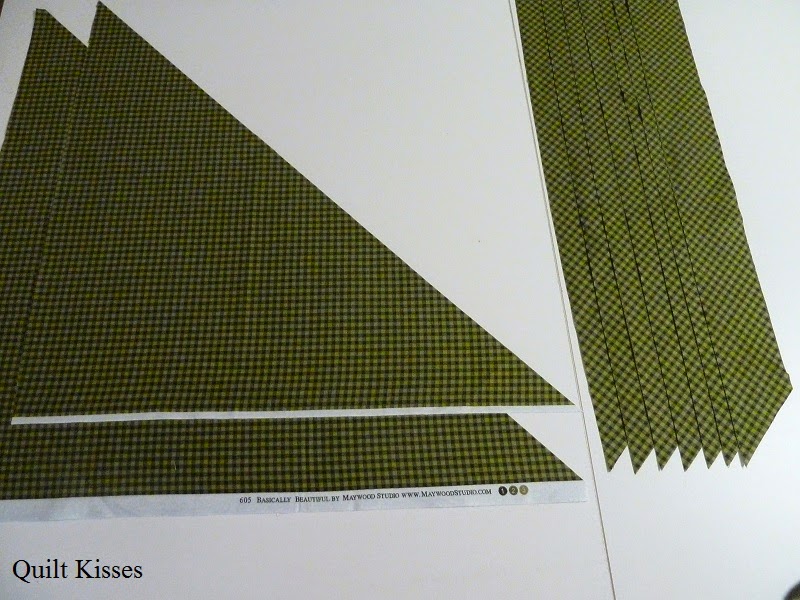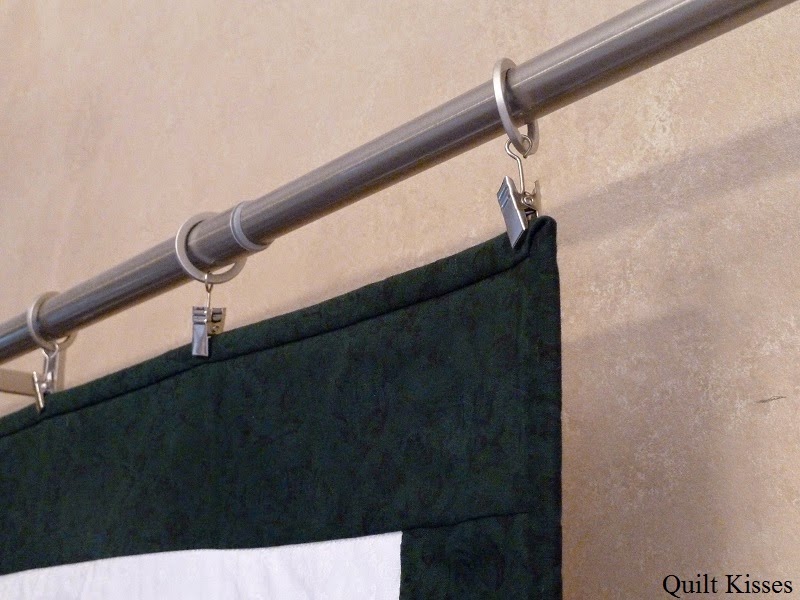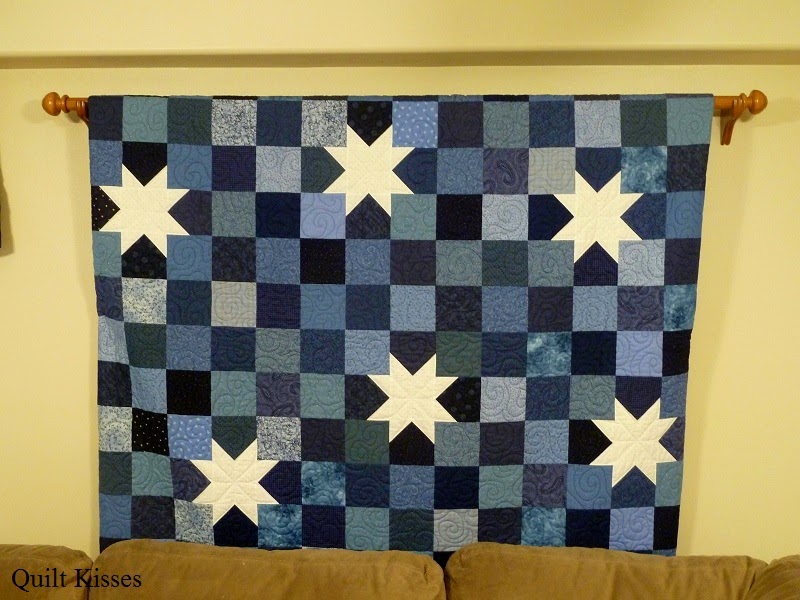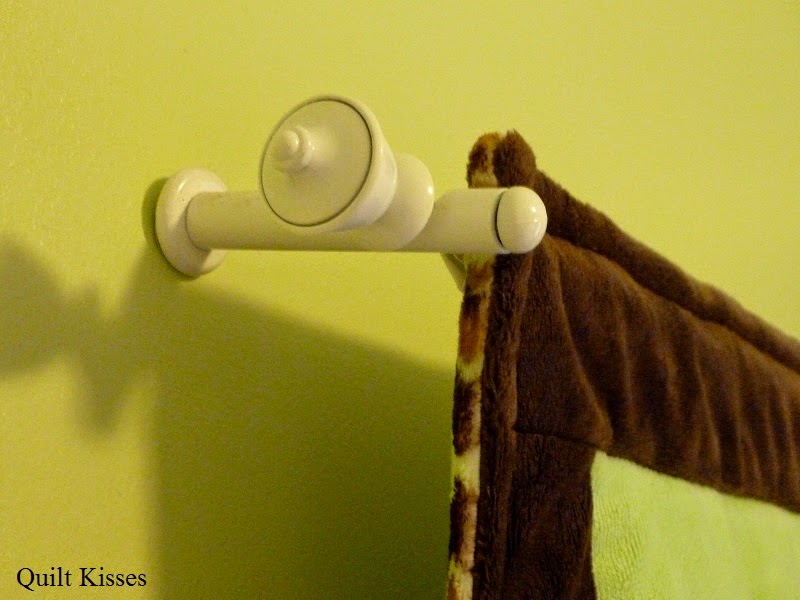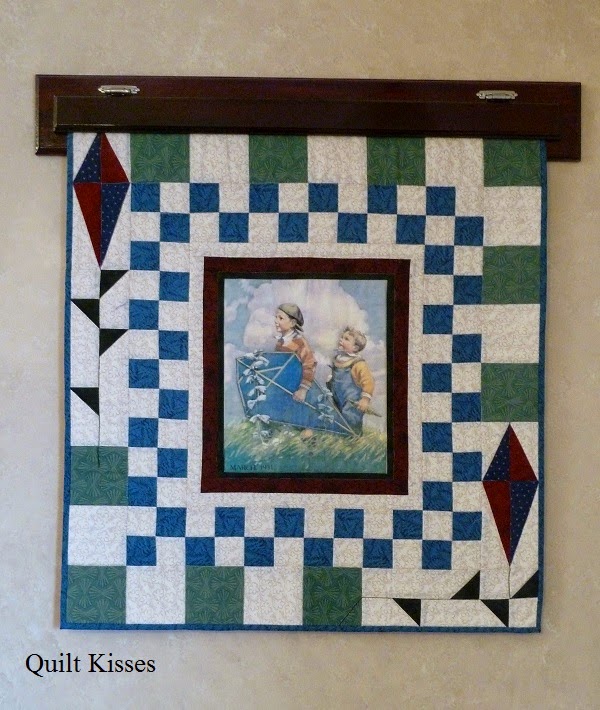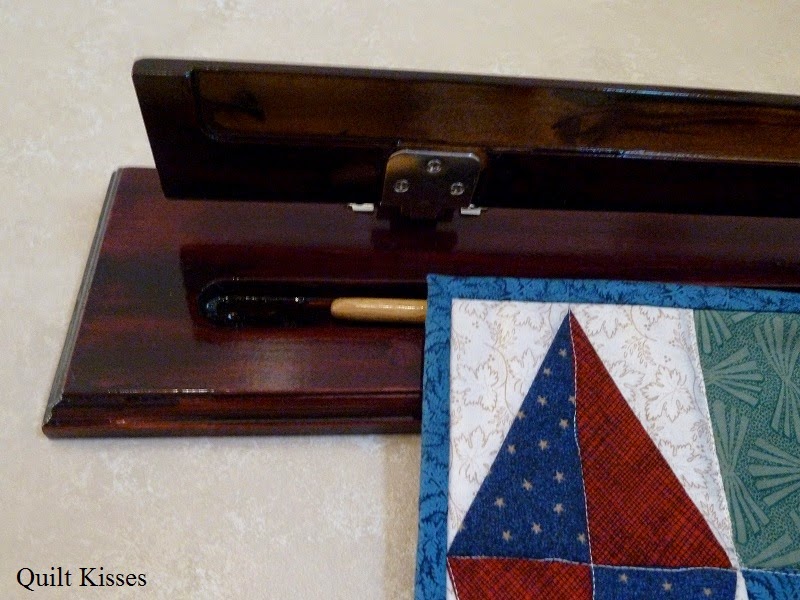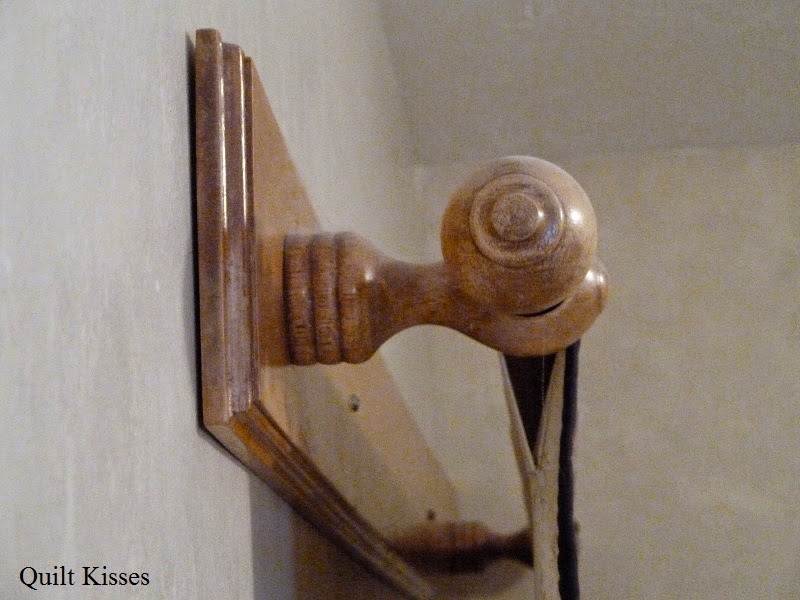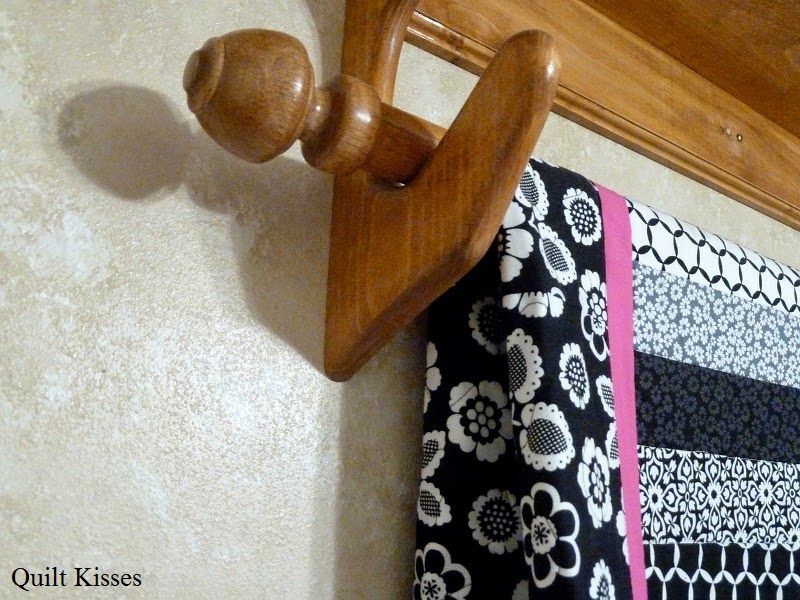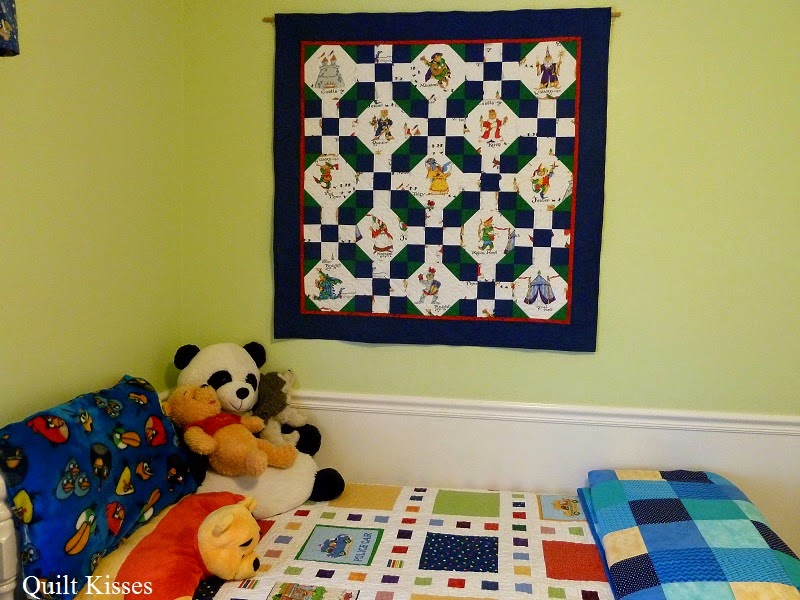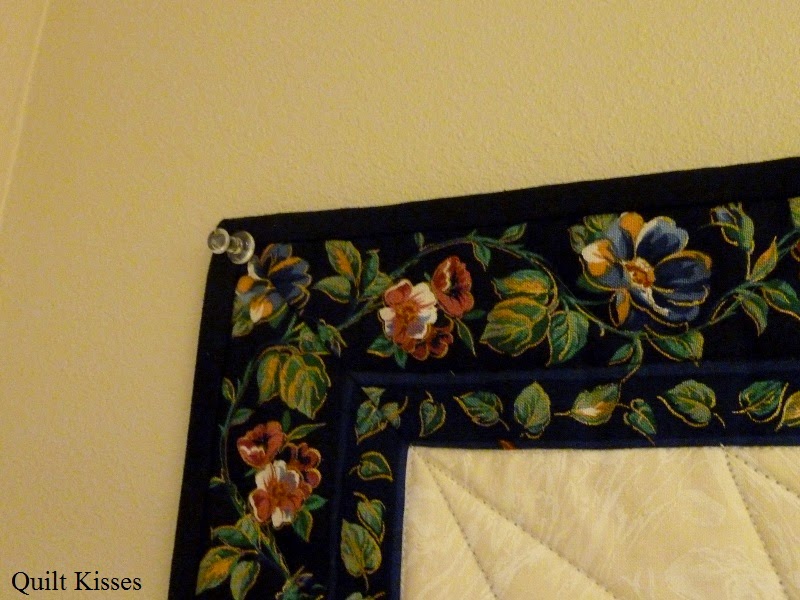I have been doing a lot of reading in preparation for my Free Motion Quilting Basics classes which I teach at my LQS. I have especially been reviewing these books.
After reading through First Steps to Free-Motion Quilting by Christina Cameli a second time, something finally clicked. Christina recommends quilting away from you in a counter-clockwise direction. She says that this makes it easier to see what you have already quilted, so you don't run into your previous stitches.
It was her words of a counter-clockwise direction that finally sunk in. That is backwards from how I have always quilted with all over designs like meandering, loops, and swirls. When piecing or quilting with the walking foot whatever you have just sewn goes behind the needle. When quilting away from you, what you have just quilted is in front of the needle and you are pulling the quilt towards you. Completely backwards!
I believe that most techniques are worth trying at least once, so I have been experimenting quilting away from me for the past month since my first class. It was difficult to wrap my mind around quilting backwards. However, I have to say that I now absolutely love it!!!
I have taken some pictures along the way to show how much better the view is when quilting away from you.
In the following picture I am quilting my quilt Cherish with a flower design from Christina's second book (which she calls Cherish). I have just finished one flower and have limited space between flowers to quilt before starting the next flower. This is what my view would normally look like when quilting towards me.
In this next picture I have drawn over what I just barely quilted with black and my previous quilting in blue.
Now look at the difference when quilting away from me.
It is much easier to quilt between those flowers.
Especially when my cream thread blends in so well with the yellow.
And my quilting machine (a Tiara) has a great view. Imagine the difference it makes when quilting on a domestic sewing machine.
There is a lot more machine blocking the view on a domestic. And I have had crinks in my neck from peering around behind the needle before.
I have also quilted away from me on my husband's quilt and my brother's quilt. In the picture below you can see I am quilting away from me and to the right up into the corner.
I have to say that not only is the view better, but I have less drag on the quilt itself. I am now changing the direction I quilt an all over pattern.
I will say that I think this only makes a big difference on all over designs when sitting down to quilt. When quilting in rows like on this blue baby quilt, I still quilt one row away and the next row towards me. (That keeps the design more continuous.)
I also don't think it would make a difference on block designs, because you have to quilt the entire shape anyway.
In my second Free Motion Quilting Basics class last Saturday, I encouraged my students to try quilting away from them. I think they liked the view better as well.
As a side note, I just wanted to say that it was so nice teaching the same class more than once (same class different students). This time I went in with more realistic expectations for what we could cover during the class. I spent the first hour going over background information: batting, needles, thread, basting... Then went over starting to quilt and tension. They then worked to get good tension on their machines. After which I talked about doodling and different quilting designs. Then they doodled before moving on to quilting those designs. While I still wish the class could go longer than three hours, this is what the manager feels is best. I will teach the basics class one more time next month. I have a part two where we will quilt a baby quilt scheduled for next month as well, however no one has signed up for that yet.
My students really liked my handouts. Only one of them had previous experience with FMQ, and she especially loved the handouts showing multiple designs.
I am looking forward to my next class and continuing to quilt with a better view! Please tell me that I am not the only one who didn't know this. What direction do you normally quilt?
XX,
Jasmine
P.S. I will be linking up with some of the fun parties on my sidebar. Check them out to see what other quilters are doing.





































